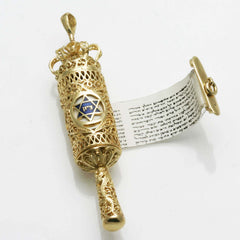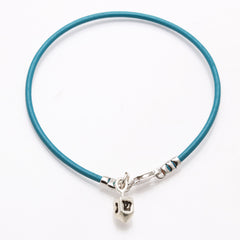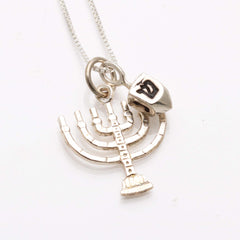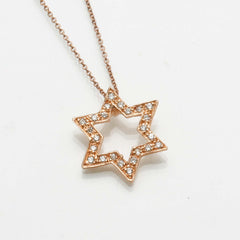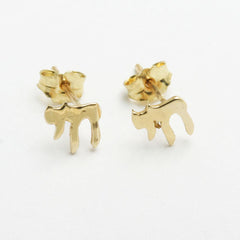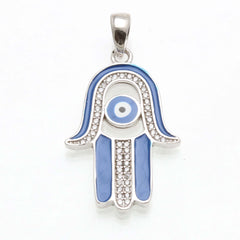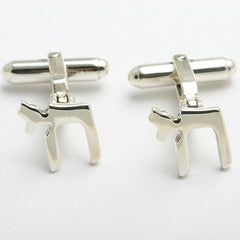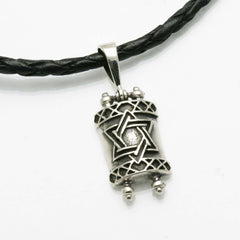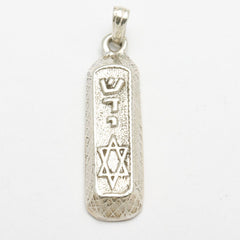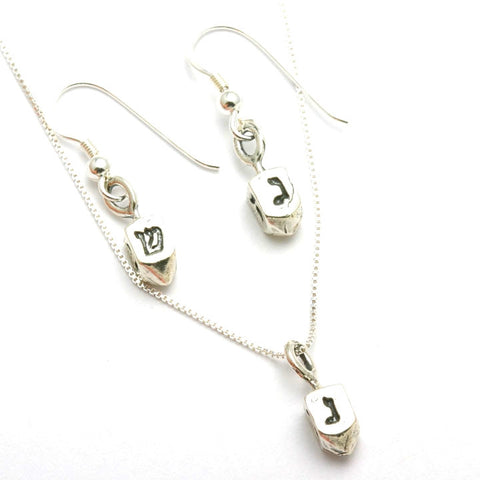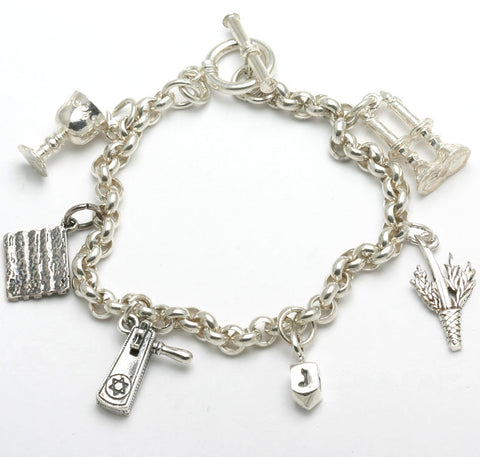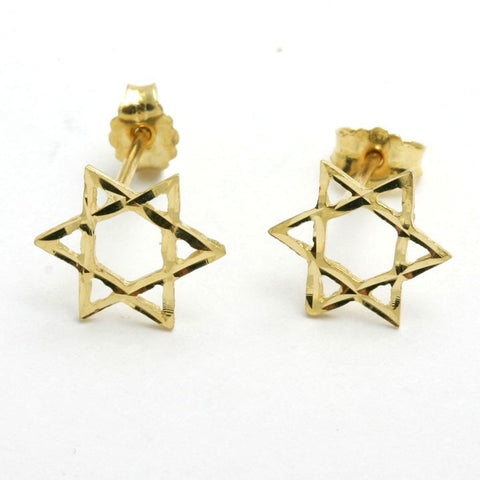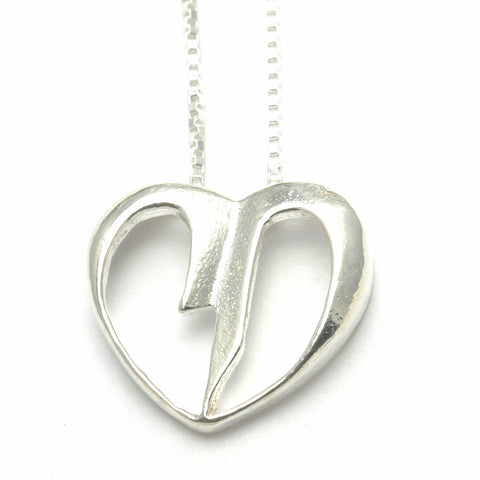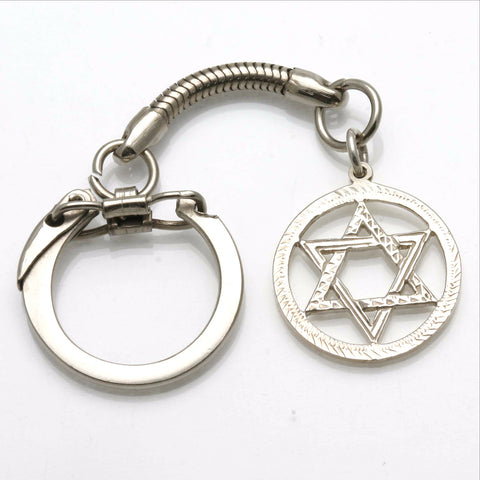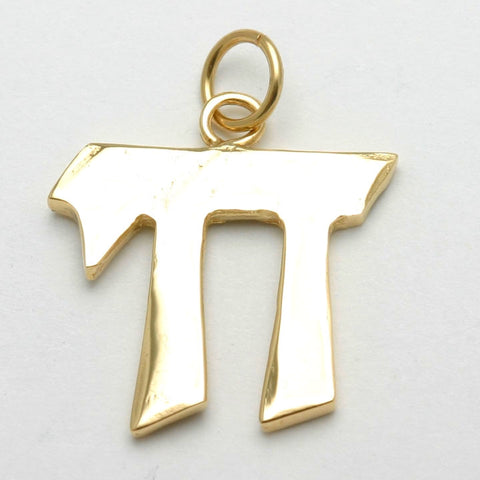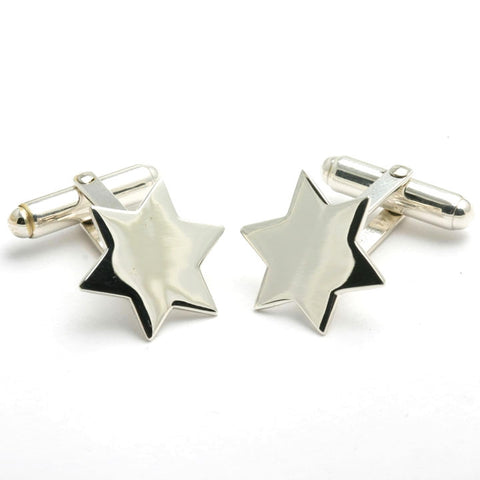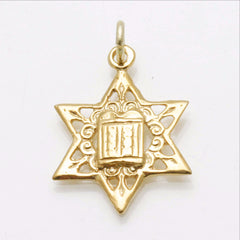The Jewelry Judaica Blog
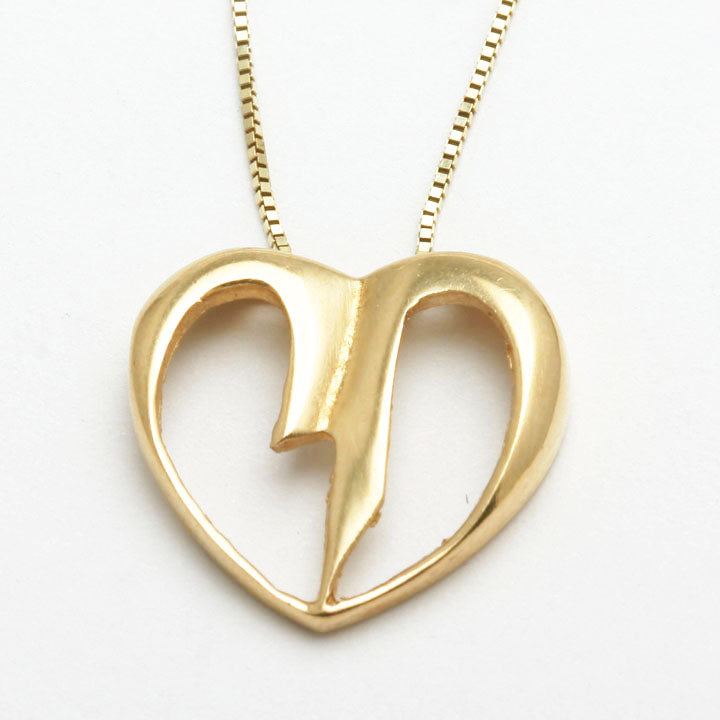
Tu B’Av
Tu B’Av
ט ו באב
Ah, Valentine’s Day. A joyous occasion of roses, chocolate, and eating ice cream by the tub alone in your room. While Valentine’s Day has gained notoriety around the world, Tu B’Av is still very unknown. A Jewish holiday with uncertain roots has transformed into a whole day devoted to love and human connection.
Since this holiday is very old (as many things are in the Jewish religion), there is no set “beginning” of this tradition. The story goes that one day, the daughters of Jerusalem danced in a vineyard wearing white dresses, and the men were asked which one they would want to be their wife. That’s why the modern take of this day is all about love. The men were said to find their one true love dancing in the vineyard. To celebrate and signify the white the dancing women wore, here is a beautiful white gold chai pendant. This pendant not only symbolizes the white frocks the women wore, but also embraces the femininity of the women. The swirl cutouts are reminiscent of the vineyards women danced in.

Even though this holiday is not widely celebrated, the Talmud (the Jewish book of teachings) considers this day of festivals the greatest of all the holidays, with Yom Kippur a runner-up. Personally, I find it positively insane that I have grown up all my life being told that Yom Kippur is the most important holiday, when in fact it was simply a holiday of dancing, celebration, and love. I would much rather be dancing in the streets than sitting in temple on a day off in uncomfortable clothes.
The thing is, there is no legal “day off” in Israel for Tu B’Av. It is a normal work day. Religiously, this holiday is observed through an omittance of certain morning prayers. For a holiday the Talmud thinks is more important than Yom Kippur, it seems like a pretty measly celebration. However, in more modern times, Israeli culture has celebrated this holiday with celebrations of dancing and singing into the night. Here is a sleek ahava pendant to honor the holiday in a very modern way. The small rose gold charm is 14k of elegant beauty. “Ahava” (spelled אהבה in Hebrew) directly translates to “love.” This pendant can make you feel even more connected to Israel, as it is a replica of the famous statue in Tel Aviv.

It is a good thing this holiday is when it is. It follows the somber holiday of Tisha B’Av, which is a day of remembrance of all of the travesties and genocides the Jewish people have endured. In my eyes, it is a nice contrast from a dark day to one of love and acceptance. It shows the true Jewish resilience that one can go from a day of memorial, moments of silence, and sirens in the street to love, harmony, and peace.
The whole foundation of this holiday is love. Yes, it started out simply for men to find wives. However, over time it has come to mean so much. One single day, devoted to love. Love of self, love of others, love of love. I truly think that is what we, as humans, need right now. In a turbulent time when antisemitism is on the rise, what the Jewish people need is more and more love. To come together, rather than drift apart. Now, more than ever, Israel should stay united under love, and Tu B’Av is the best way to celebrate that.

My relationship with Purim
The last email we sent out got me thinking… I never really realized that Purim has always been one of my favorite Jewish holidays and my relationship with the holiday has changed over the years.
As with most Jewish holidays, there is so much tradition and really fun tradition that goes along with Purim I have so many fond memories from my childhood (yes, I went to Jewish day school!) of dressing up, songs about clowns, the heroes Queen Esther and her uncle Mordechai, booing Haman with a grogger, art projects, getting mishloach manot full of one of my all time favorite desserts… hamantashen!
As I got a little older I found different ways to connect to the Purim story, I was in a play called the Purim Speil where I played a “Shushan girl”, I participated in a Megillah reading and to this day I still know my little 3 line part and I really started to understand what it meant that one evil person wanted to wipe out all the Jews. Haman was the first villain I really learned about although I don’t know if I really understood that something like this could occur in the world I live in.
Then came the teenage years when holidays don’t seem cool anymore and dressing up is for little kids and you don’t really want to be dragged to a Megillah reading even though you know it will be fun. And then when you get closer to drinking age and you realize that all the synagogues have tons of alcohol sitting out for everyone to enjoy, the prospect of going to party at shul starts to become a little more interesting!
College years were all about drinking at shul. But when I stopped to reflect on the holiday, it had a much stronger significance to me. College was the first time I was really living outside my Jewish bubble. A fully diverse university full of anti-Israel and Anti-Semitic propaganda. Close friends who had relatives that didn’t believe the Holocaust happened. A very different world in which the Purim story seemed less like a kid’s tale and more like reality.
And back home after college, the holiday became about indulging in my love of baking and finding the perfect hamtashen recipe (which can be found on this blog). And teaching my niece and nephews how to make them and setting up a hamntashen factory at my parent’s house and coming up with all kinds of fun fillings. Because what is a Jewish holiday without something absolutely delicious to eat and what easier way to connect to the holiday than by baking and eating yummy cookies?

And fast forward to now… with two of my own babies the first old enough to appreciate the holiday I suddenly find myself wanting to do EVERYTHING possible to share in her excitement and create even more. We are constantly singing and listening to Purim song medleys and planning out what costume she is going to wear on what day. I already stocked the pantry full of hamntashen ingredients and I’m thinking that our weekend project should consist of making tons of Michloach Manot. We are going to her school Purim party and 2 Megillah readings! Maybe it’s a little over the top but I can see how much she loves it and I want to foster it as much as possible.
Even though she doesn’t understand the significance of the Purim story now, its important to keep telling her the story and make sure she connects to it. Now more than ever, we see that Antisemitism is alive and well and that there really are people who want to kill us just for being Jewish. My hope for her is that she loves the holiday as much as I did and never has to encounter a Haman in her lifetime.
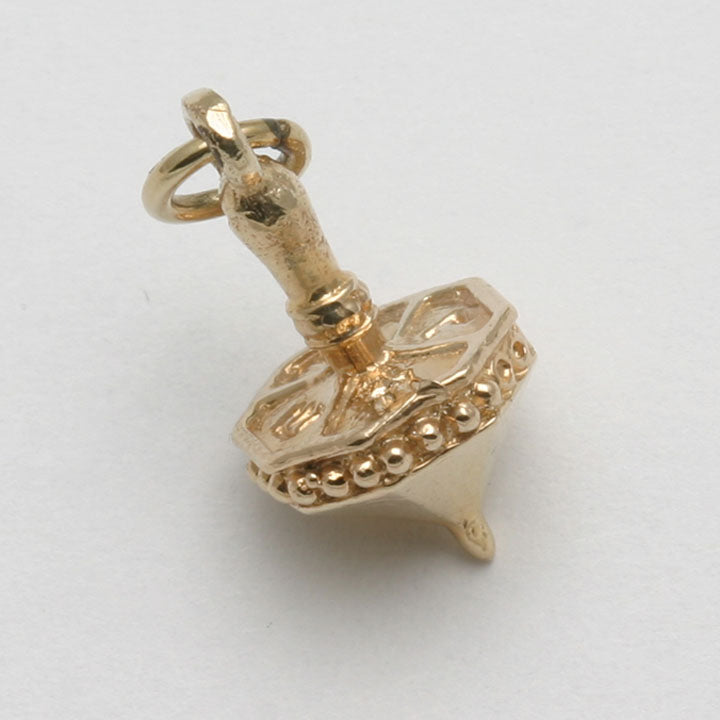
2018 Holiday Gift Guide
We can't believe its already November! Thanksgiving is almost here and Hanukkah is just around the corner. It starts early this year, Sunday evening December 2nd! We put together a list of a few items we know we'd love to receive and think you'll love to give! Here is a short gift-giving guide with some great ideas for getting the perfect gift.
Seasonal Gifts
Turquoise Dreidel Bracelet
This darling bracelet is sure to bring out your holiday spirit. A beautiful turquoise leather bracelet with a Sterling Silver Driedel charm at the end. The perfect accessory to wear while you spin that dreidel! Buy it for $35.99
Sterling Silver Dreidel Menorah Necklace
Hanukkah is a festive holiday and this charm necklace is the perfect way to show it. A Sterling Silver menorah and dreidel charm slide freely on a box chain. Great for all ages! Buy it for $59.99
Gifts for her
Rose Gold Diamond Star of David
Wow her with this gorgeous sparkly Star of David. It resembles a snowflake and slides beautifully on the chain. The diamonds are top quality and the rose gold is just exquisite. Buy it for $584.99
Silver Bead Bracelets
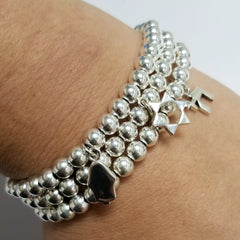
You have seen this style bracelet on everyone! In gold, silver with or without charms dangling from it. Now is the time to add a Judaica one to your collection. Each bracelet stands alone but also looks great stacked! Available in 2 sizes. Mix and match and create your own unique look! Bracelets start from $71.99
Yellow gold Chai Earrings
Our best selling Chai stud earrings can be worn by children or adults. Very popular with Bat Mitzvah girls and second piercings for adults alike. We love the rich gold tone of these handmade stunners, but this style is available in silver too! Buy it for $99.99
Silver Evil Eye Hamsa Pendant
This Hamsa is sure to make a bold statement. Its solid and intricately designed with vibrant blue enamel, white enamel and cubic zirconia. It has an Evil eye in the center and would look great paired with a medium box chain! Buy it for $64.99
Gifts for Him
Gold Star of David
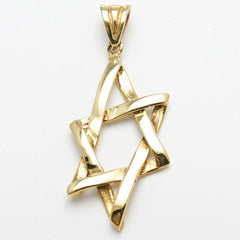
This stunning star is a favorite for the men! Solid, smooth and long its classic but unique and definitely masculine. Buy it for $424.99
Sterling Silver Chai Cufflinks
2018 is the year of Chai! And we have been selling more Chais tthan ever. Commemorate the year with pair of Chai cufflinks! Double Chai, extra lucky! A great way to dress up an outfit. Great for Bar Mitzvah gifts, graduation gifts, father's day and of course Hanukkah! Buy them for $119.99
Torah Cord Necklace
Guys LOVE our cord necklaces. The black woven leather cord has a masculine feel and the oxidized finish on the pendant is more subtle than the classic high polished Judaica jewelry. This pendant is a beautifully made rounded Torah with a Star of David on it. Buy it for $84.99
Silver Mezuzah
Another classic, this solid masculine Mezuzah has a matte finish. It says "Shadai" and has a Star of David on the front. Pair it with a rope chain for the ultimate Hanukkah gift! Buy it for $74.99
We hope this helps you out!
Gift wrapping and gift cards are available too!
Happy Shopping,
The Jewelry Judaica Team
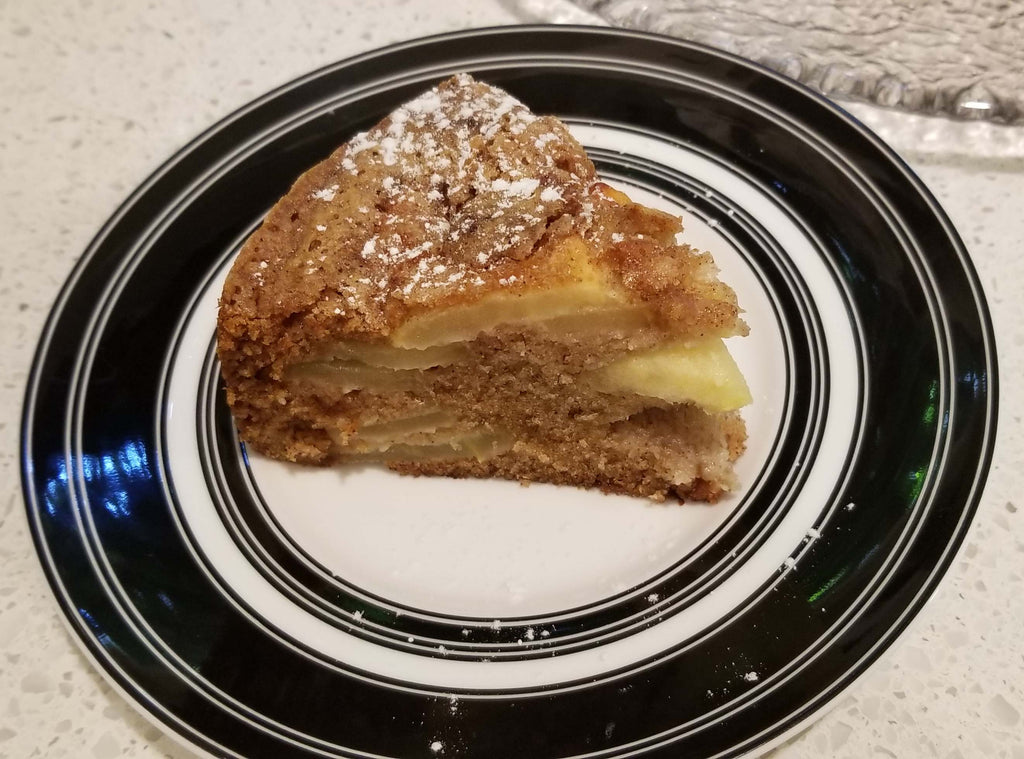
Apple Cake for Rosh Hashana
We are here to let you in on a little secret. Our favorite apple cake is delicious, easy to make and perfect for Rosh Hashana! So, if you want to impress your guests or those that are hosting you… try this recipe today! And if you do, post pictures of your cake in the comment section so we can see how it came out!

Ingredients:
4-5 Apples
1 lemon (juiced)
1 ½ cup flour
1 ½ cup sugar
¾ cup oil
1 tsp baking soda
1 tsp cinnamon
4 eggs
2/3 cups raisins (optional)
Directions:
Preheat Oven to 350
Grease a 9” springform pan
Peel and slice apples, arrange in the pan

Pour lemon juice on top of apples
Mix all the other ingredients and pour over the apples

Bake for 50-60 minutes, until toothpick comes out clean
Let cool before you open spring form

Sprinkle powder sugar before serving

Notes:
There is no correct way to arrange the apples! Just lay them down so they form layers. They don’t have to be even. The beauty of this recipe is that the cake mix fills in all the gaps between the apples and the apples create a beautiful design on top as well. You don’t have to be creative, just place the apples and pour the ingredients over it and voila!
The cake is very tasty when its warm or cold. Its very light and generally doesn’t last longer than a day in our household, but after a day I would recommend storing it in the refrigerator.
Wait until you serve it to sprinkle powder sugar, otherwise it absorbs into the cake and disappears
I personally prefer it without raisins, but golden raisins are a great addition as are walnut pieces.
Any apples work great, my preference is granny smith!
Hope you all enjoy this delicious cake.
Wishing you a happy, healthy and SWEET new year!
The Jewelry Judaica Team
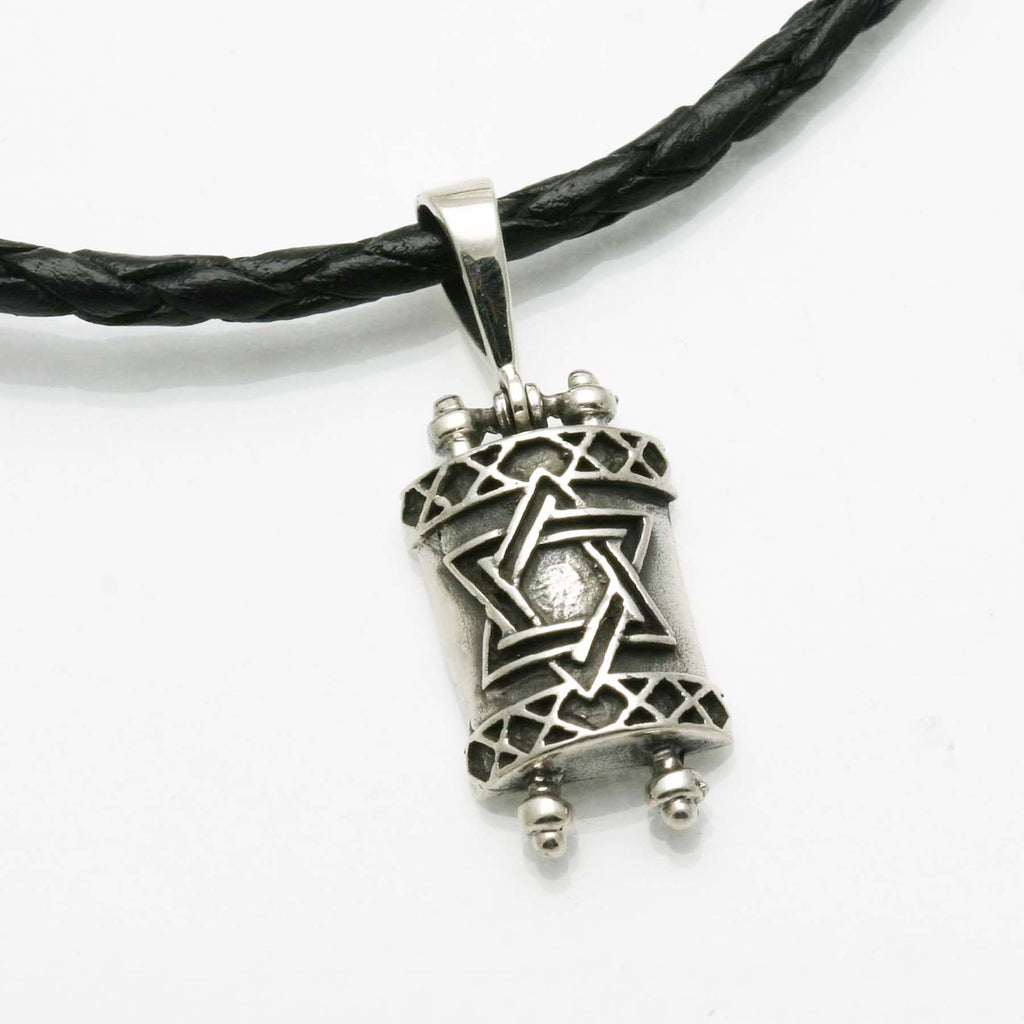
Judaica Jewelry for Men? We've got you covererd
One of the most common questions we get at Jewelry Judaica is which items are most appropriate for men. So we decided to dedicate a blog post to this topic. We hope this post will serve as a guide to help you when you are shopping for the men in your life (or yourself)!
If you are looking for Bar-Mitzvah gifts, you can check out that gift guide here!
We find that Classic Chai, Star of David and Mezuzah motifs are most popular for men. So we will list some options in both gold and silver in all three categories.
CHAI
Maybe its because its the year 20chai (2018) but Chai's are more popular than ever and we have some thick, solid, clean Chai pendants in different fonts that are more modern in style. Many of them are available in sterling silver yellow gold and white gold.
And if you are looking for something more ornate, these are some great options as well!
MEZUZAH
The mezuzah is a more traditional Men's judaica gift. And most mezuzahs are more ornate but we do have some clean solid styles as well. Here are some of our best sellers in gold and in silver:
Silver
STAR OF DAVID
Last but certainly not least, the classic Star of David. Like the Chai, both the simple solid Stars and Ornate ones are equally as popular. All these have a nice heft to them and are among our best sellers!
Gold
Silver
ACCESSORIES
While the most common Judaica gift for a man is a pendant, here are some other very popular men's items as well. They include cufflinks, key chains and rings. We also have some lovely men's chains available in silver.
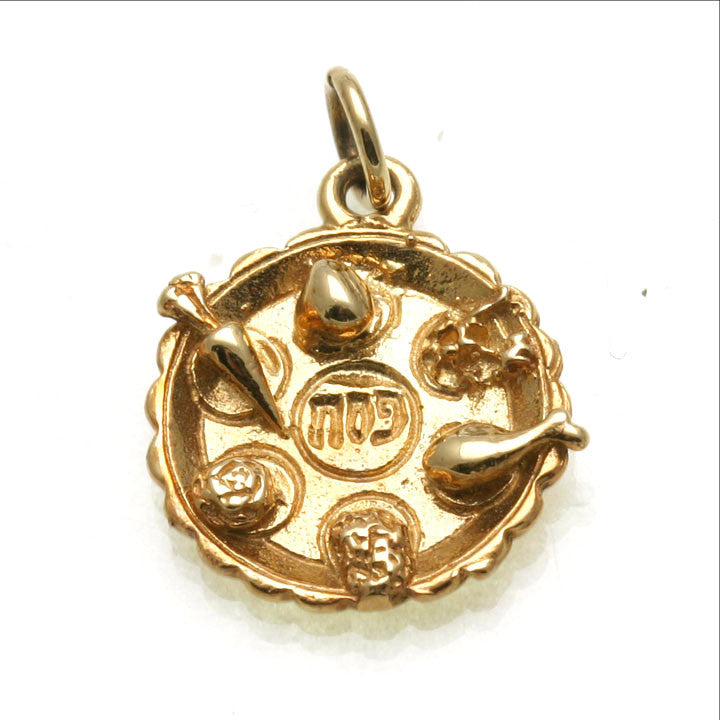
Embrace the Passover Menu: A Recipe for Enjoying Passover Foods
“I hate Passover food! There’s never anything good to eat on Passover, just matzah, matzah, matzah…”
That’s what I used to think and I dreaded the holiday as a result. But over time I’ve learned to enjoy the Passover menu, given a little mental and food prep.
At the root of it, Passover is a wonderful holiday where we remember the great exodus and redemption of the Jewish People from slavery in Egypt. As everyone knows, in order to mark the event, Jews are obligated to symbolically emulate the struggle of the Israelites’ rushed departure from Egypt by giving up all leavened foods for the duration of the holiday. This is no easy task and going into Passover without the right expectations or preparation is a recipe for disappointment, as it was for me for years.
But just because we can’t eat a lot of the foods we normally eat, we aren’t obligated to suffer or starve! Far from it! After all, Passover is a joyous holiday and simply takes a little more time and planning to enjoy. Passover eating is about changing expectations and creating a new, special menu for the week. With a little prep work, your Passover doesn’t have to be about eating tons of matzah. Passover can be a real feastival.
Most importantly, be ready to take a break from hametz for a few days, including breakfast cereal and pasta. Don’t try to pass off kosher for Passover pastas or cereals made from matzah meal. These impostors are usually a terrible let down. So be prepared to give up sandwiches, most cookies, rice (unless it’s your custom, of course), and whiskey for a week.
Embrace the lot of special and delicious Passover foods we eat that we don’t normally enjoy during the rest of the year. No, I don't mean matzah. Charoset, for example, is a favorite of mine and I like to eat it throughout the holiday. We also eat lots of egg dishes, meals of chicken or beef, potatoes and other vegetables, salads, fruit, dairy, matzah balls, matzah brie, matzah pizza, and yes, even delicious desserts! With a little bit of planning and preparation, your Passover can be delicious.
The key is to plan things out a bit so you're not stuck with some jarred gefilte fish and dry matzah. Do this and you too will start to love the Passover menu.
Hate macaroons from a can? We can do better! To help you on your way to a tastier Passover, here’s a very easy a macaroon recipe plucked from the LA Times a few years back:

CELESTINO’S MACAROONS
1 cup sugar
1 tablespoon Passover potato starch
4 egg whites
1 cup coarsely ground toasted hazelnuts
- Blend sugar and potato starch in food processor until powdery. Beat egg whites until soft peaks form. Stir in sugar mixture, little at a time, then stir in hazelnuts.
- Cook mixture over low heat, mixing with wooden spoon, until mixture pulls away from sides of pan. Remove pan from heat and cool 10 minutes.
- Drop hazelnut mixture in 1-tablespoon mounds onto baking sheet lined with parchment paper or foil, leaving about 1 inch between cookies. Bake at 350 degrees until golden brown, 20 minutes.
Makes 4 dozen cookies. Each cookie contains about: 30 calories; 4 mg sodium; 0 cholesterol; 1 gram fat; 5 grams carbohydrates; 0 protein; 0.07 gram fiber.
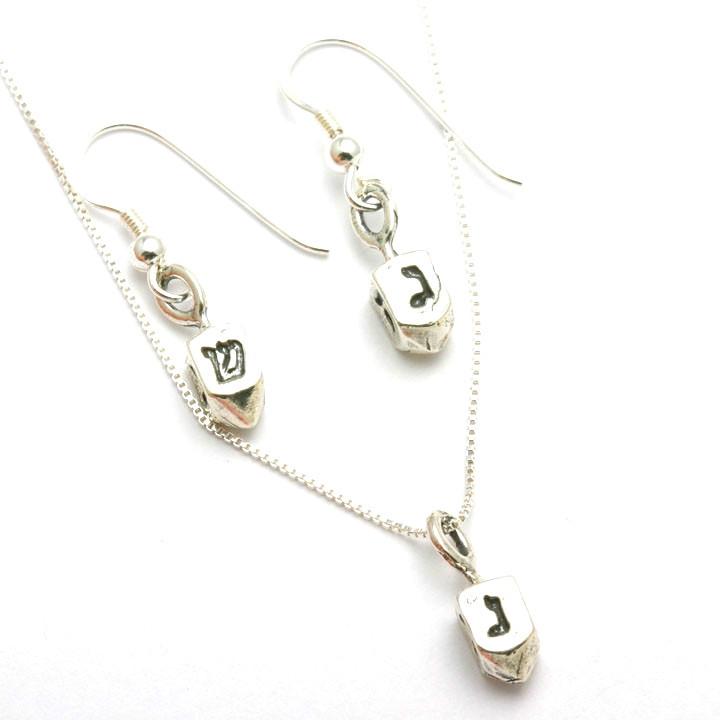
2017 Holiday Gift Guide
Seasonal Gifts
Dreidel Earring and Necklace Set
Hanukkah is a festive holiday and these earrings and necklace are the perfect set to bring out your holiday spirit. You’ll want to play the dreidel game with these 3D dreidel earrings and necklace, made of solid sterling silver and featuring the engraved letters “nun,” “gimel,” “hay,” and “shin.” This adorable set can be worn during Hanukkah and all year round. Buy it for $89.99.
Holiday Charm Bracelet
Why limit your holiday spirit to Hanukkah? This stunning bracelet has 6 lovely three-dimensional solid charms representing different Jewish holidays, including a Passover matzah, Purim grogger, Sukkot lulav, and of course, a Hanukkah dreidel! The bracelet itself is solid and an elegant link. And the best part? There is room to add even more charms! Buy it for $294.99.
Gifts for Her:
Rose Gold Diamond Chai Necklace
Treat someone special with this dainty and elegant chai necklace, made of 14k rose gold, pave set with sparkly white diamonds. It’s a great every day piece that looks great layered or on its own! Buy it for $429.99.
Opalite Hamsa Pendant
This hamsa has a classic, timeless, stunning look! Filled with opalite, the pendant has a vibrant blue and green shimmer. The hamsa motif is believed to offer protection from the evil eye. There back also features an oxidized design with a protective Kabbalistic inscription (the letters Alef, Lamed, and Dalet), making it reversible. This pendant is solid and beautifully made. Buy it for $71.99.
Classic 14k Star of David Earrings
These classic Star of David earrings are enhanced by diamond cutting which makes them sparkle in your ears! They can be worn by women (or men) of all ages! They are super cute and would be an adorable gift for her. The entire earring and backing are made of 14k yellow gold. Buy it for $99.99.
Chai Heart Necklace
This artistic design subtly blends the Hebrew word "chai" into a lovely heart design. The result is a design that is less obviously Jewish but just as elegant and stylish as any of our designs. It is perfect for someone who wants to wear a chai and be a bit more subtle. It makes a lovely gift for women of all ages. Buy it for $57.99.
Gifts for Him:
Star of David Keychain
This is a perfect gift for the man in your life that doesn’t wear jewelry! This keychain has a sterling silver Star of David dangling from it. The star is encircled so there are no pointy edges that can catch on anything. And both sides are finished beautifully, with two different textures to add a unique flair. Buy it for $69.99.
Yellow Gold Modern Chai pendant
Chais are are often made for dudes because dudes dig ‘em. And your dude will dig this one. This modern chai features sleek, bold lines. It is solid, heavy, high-polished and can be worn by men of all ages. Buy it for $219.99.
Star of David Cufflinks
They say that clothes make the man and these cufflinks certainly finish the ensemble. These gorgeous Star of David cufflinks are bold, solid, and feature a high polish. A little flash without costing too much cash, these are a great value. They can be worn as is or monogrammed (email us for details)! Buy it for $119.99.
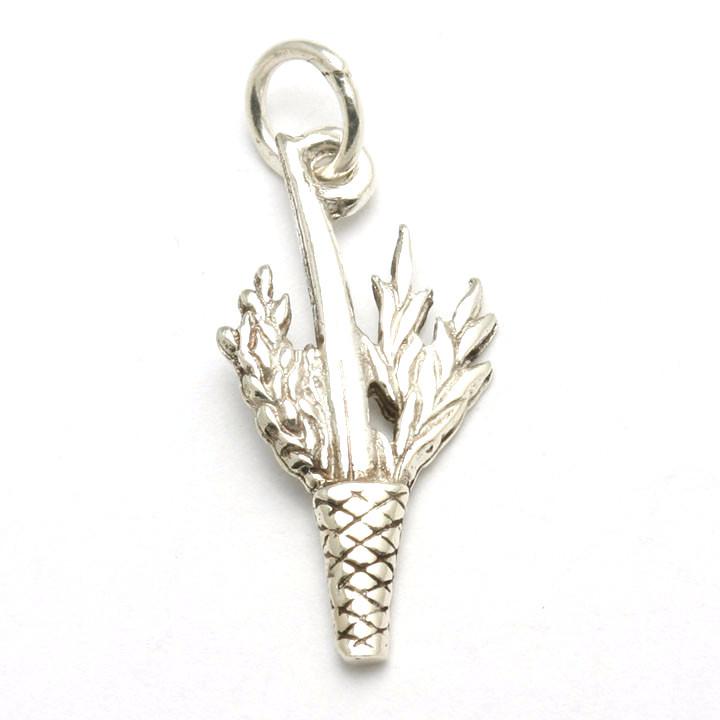
Reflections on Sukkot
For many people, myself included, Sukkot is a favorite among Jewish holidays. Maybe it’s the lovely autumn time of year. Maybe it’s that so much of the holiday entails being outdoors. Maybe it’s building the sukkah or shaking the lulav. I believe there is a combination of factors that makes Sukkot the right holiday at the right time with the right message and the right energy.
Among the names of this holiday is Z’man Simchateinu, or the time of our rejoicing. This perhaps best encapsulates the spirit of Sukkot as a time of joy, unity, abundance and thanksgiving.
First, consider the timing of Sukkot. We’ve just finished a slog of holidays, culminating in a long and difficult day of self-denial and repentance. The high holiday season is indeed a marathon for Jews. From before Rosh Hashana through Yom Kippur, we are preoccupied with our spiritual healing and wellbeing. We try to wash away our sins and become better, ethically and spiritually, to earn a favorable judgment for the coming year. In the process of trying to earn a better judgment from God, something pretty great happens. In our course of self-reflection and improvement, we forgive those who wronged us and ask them to return the favor. The result is a very positive phenomenon of making our entire community a more hospitable place. In focusing on ourselves, we’ve helped restore spiritual health and brotherhood of our entire community to start the year on the right foot. Then comes Sukkot. And what better time to celebrate than when we have made peace with ourselves and our neighbors?
Now consider this in the context of the double meaning of Sukkot, which falls just days after Yom Kippur. Sukkot is a holiday with two important Biblical foundations. The first is to commemorate the Israelite journey through the wilderness for 40 years under the close protection and sustenance of God. As such, we are commanded to eat and live in temporary huts, Sukkot, to recall how God provided for us. Jewish tradition holds that the time in the wilderness was a time spent in a divine presence and was a fundamentally spiritual time for the Jewish People, their physical needs met as God provided them with shelter and manna to eat. Sukkot is the holiday in which Jews try to tap into that divine period in Jewish history by reenacting the experience. In fact, just by being in the Sukkah fulfills the core commandment of the holiday and is unique in that we perform it with every part of our body. Yet whether your sukkah is a grand structure or made of a few planks, all Jews fulfill the mitzvah the same way.
Now fast forward to the time of the Holy Jewish Temple in ancient Israel. Sukkot was a time of great joy and fulfilment. One of its names is Chag HaAsif, the Festival of Ingathering, as Fall is the time of year when the harvest is complete and storehouses of food are full. Jews were commanded to make a pilgrimage to Jerusalem during this time and made sacrificial offerings from their harvest. Again, Sukkot is a time of sustenance.
Let’s check off the boxes so far. We have our recent spiritual cleansing, forgiveness, and we’re supposed to have our grain silos full (either literally of perhaps metaphorically).
Let’s also look at one of the other core mitzvahs, or commandments, for the Sukkot holiday. Jews are commanded to take four species of plants, a date palm frond (lulav), myrtle branches (hadass), willow branches (aravah), and a citron (Etrog). The most commonly accepted symbolism of the Four Species, commonly referred to as “lulav and etrog,” is that we unite the four kinds of Jews, represented by the combination of taste (Torah) and scent (deeds) of each plant. There are those who study Torah but do not perform deeds (lulav), those who have deeds but no Torah (hadass), those who have neither Torah nor deeds (aravah), and those who study Torah and perform deeds (etrog). Because all four species are needed to fulfill the mitzvah, the message is clear that all Jews are equally important and should strive for unity as one body.
Sukkot simply has so many positive elements! It falls just on the heels of a time of great spiritual and community improvement, so we can assuage that concern for the moment. The fall harvest has ended and we are enjoying the fruits of our labor, so no need to worry about sustenance. What’s left is an opportunity to strip away material distractions and try to get closer to our roots – together. And that is perhaps the key to the popularity of Sukkot – community and unity. Whether observant or secular, learned or not, all Jews are equal under the sukkah, as we were 3,300 years ago in the desert and as we are now before God. On Sukkot, each Jew has the opportunity to reach back in time and tap into the spiritual and communal source of Judaism. Perhaps it is this great spiritual arc that makes it so appealing to so many. I like to think it is the perfect combination of all these elements.
A lulav, hadass, and aravah charm for Sukkot...
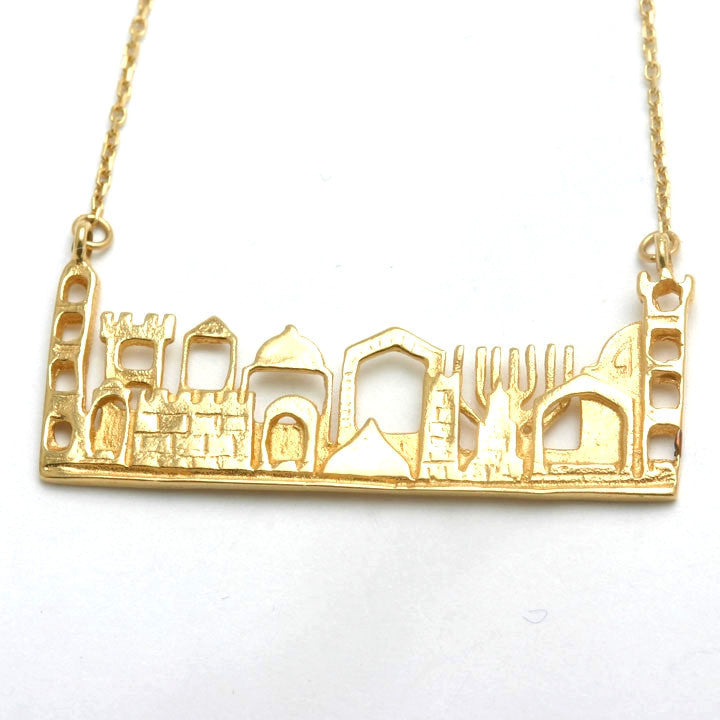
An Experience in Jerusalem; a Recommendation to Visit
Recently, our family travelled to Israel as we try to do each year (for both business and pleasure). We usually spend most of our time in Tel Aviv and this time was no different. We alternate between sourcing new jewelry designs, eating, drinking coffee, seeing the sites, and sitting on the beach. Frankly, it’s not a bad way to spend a work vacation.
But what trip to Israel is complete without a visit to the holy city of Jerusalem? Jerusalem has been the capital of the Jewish People for 3,000 years and worth the time to visit, even for an afternoon. So we did just that. We drove to Jerusalem and ate lunch in the Mahane Yehuda Shuk before making our way to the Old City.
The Kotel was fairly empty so finding a place directly at the wall was easy. I had prayers I wanted to deliver directly to God. But as I placed my hands and forehead upon the ancient, smooth stones, my prayers did not easily come out. The air became thick and heavy and my mind was weighed down and clouded, as if by a presence. Was this the Shechinah, the divine presence of God? I don’t know but it was a powerful spiritual experience. I left Jerusalem feeling more tranquil and at peace.
Har Habayit, or the Temple Mount, is traditionally regarded by Jews as the spot from which the world was created and where God’s permanent place of dwelling and worship was built. Regardless of what you believe, it is a holy place to over half the people on Earth. If you haven’t made it to Jerusalem yet, I recommend you do so at least once in your life. And I wish you a moving experience when you do…
"Jerusalem of Gold"
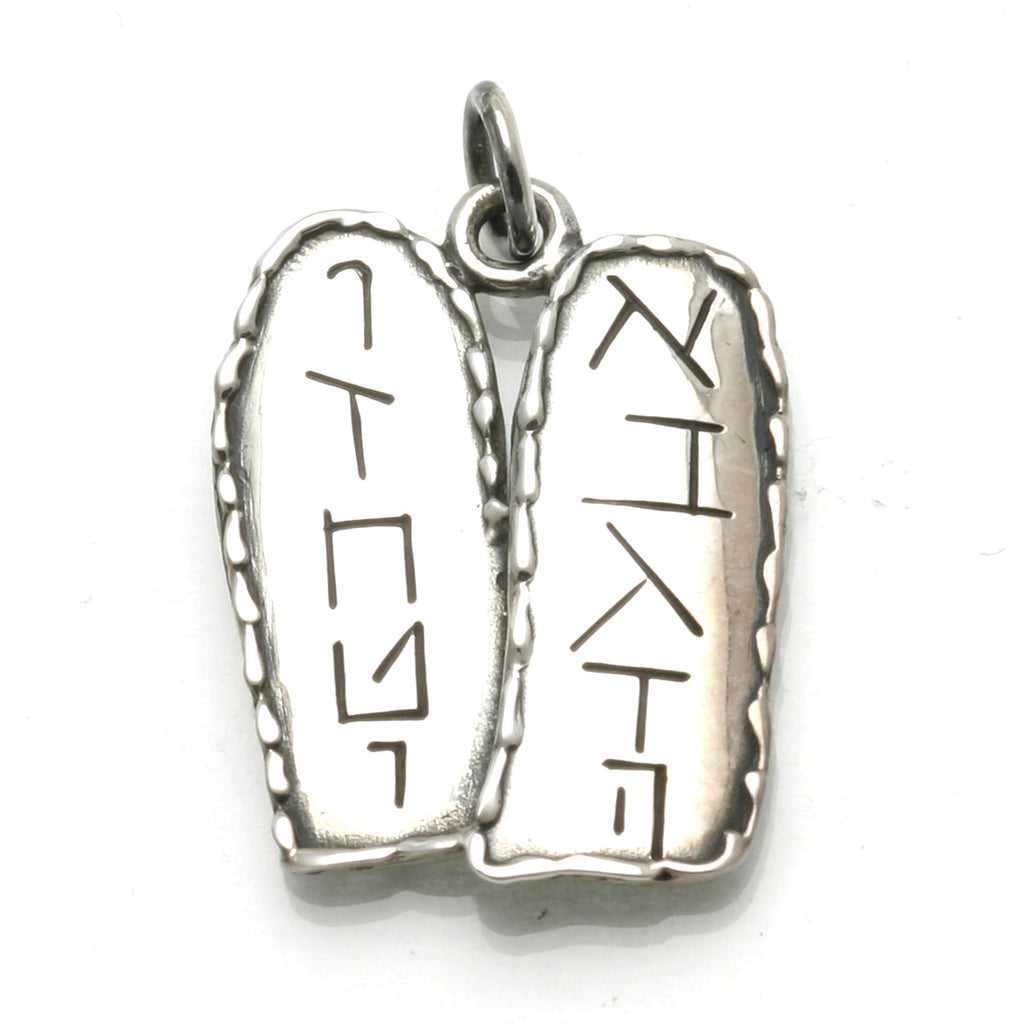
Happy Shavuot 2017!
Shavuot, meaning “weeks” in Hebrew, marks the end of the seven-week counting period we begin every year at Passover. It is the time, each year, that we celebrate the giving of the Torah at Mt. Sinai to the Israelites, over 3,000 years ago.
It is said that the Torah was given to the Jews just 50 days after leaving slavery in Egypt. This giving of the Torah marks a symbolic covenant between God and the Jewish People, forever changing how the Jewish People interact with God, each other, and the world. Of course, Shavuot is also one of the three pilgrimage holidays of ancient Israel, marking the grain harvest, in which people would bring their harvest to Jerusalem as an offering to God.
There is a wondrous parallel of celebrations here. In one pivotal day in history, Shavuot, a lowly people, recently freed from slavery in a cascade of miracles and utterly dependent on God’s provisions, received the Torah. Fast forward a few years to after the Israelites entered the Promised Land... On that same day, Shavuot, a now strong and free nation, prospering through their own labor on their own land, made annual harvest offerings to God. In this way, Shavuot marks the real completion of the liberation from Egypt, as slaves became a free and prosperous nation.
Shavuot is a “yom tov,” a day without work, marked by many traditions, including:
- Candle lighting
- Eating dairy foods
- Staying up all night to learn Torah
- Going to synagogue and hearing the Ten Commandments read
- Reading the Book of Ruth
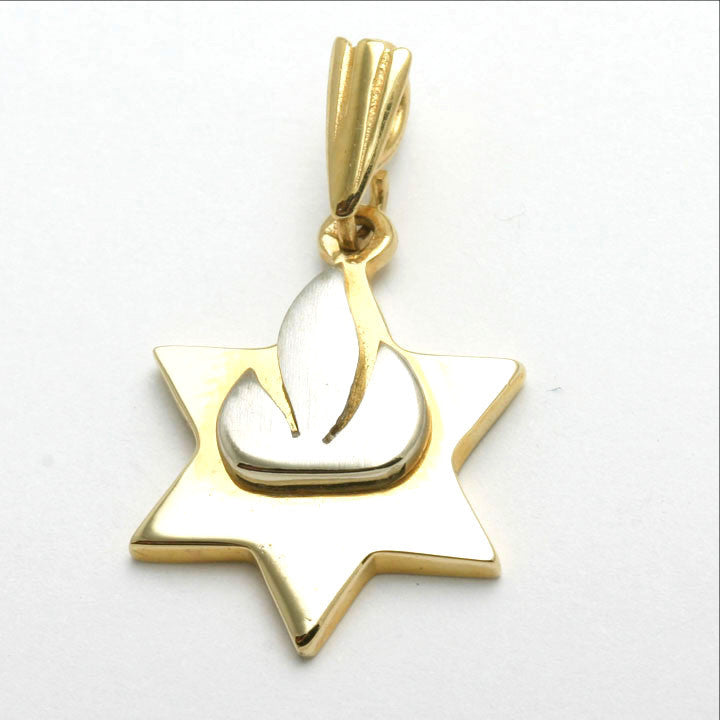
Looking for the Perfect Jewish Jewelry Gift? Here’s Where to Start…
If you’re looking for a truly special gift for someone and don’t know what to get them, it’s often hard to know where to start. Chances are, if you’ve made it to this page, you’re considering giving someone the gift of Jewish jewelry. We think that’s a great idea and you’re definitely in the right place. But now what?
It’s not always easy to gauge the personal tastes of even our closest friends and relatives, so it’s often difficult to know where to begin. If you really don’t know where to begin, we usually suggest a pendant and chain. With pendants, there is no ring size to measure or ear piercings to worry about. Pendants are our most popular selling items and work for just about everyone. Because of this, there is a huge selection of styles, motifs, and sizes – priced from under $50 to over $1,000.
So now that you’d like a pendant, you can browse our various menu categories or search the site using your own search terms. With nearly 1,000 items in our store, we’re confident you’ll find something appropriate for your occasion. Here are some suggestions to help you along in your search:
- For men: Look for bolder, heavier Star of David pendants, chai pendants and mezuzah pendants. Ten commandment pendants also work well for men. Try searching “men” in the search bar.
- For women: Most of our designs work well for women. Popular are Star of David pendants, hamsa pendants, and mezuzah pendants. Filigree designs and genstone designs are often more feminine.
- For youth: For bar and bat mitzvahs, try the search terms “bar mitzvah” and “bat mitzvah.” For very young children, try the search term “baby.”
- Don’t forget a matching chain: Chain length is largely a factor of a person's size. A proper fitting chain for a 12-year-old girl will probably be around 16" while it might be 18" for a 13-year-old boy. Adult women will probably wear a chain between 16"-20.” For adult men, this range could be 18"-24."
In some cases, you might want to let someone choose their own piece of jewelry (who knows what these 13-year-old boys like these days?). In that case, we offer gift cards. Problem solved.
If you have any questions or want additional suggestions or advice, please do not hesitate to reach out to us.
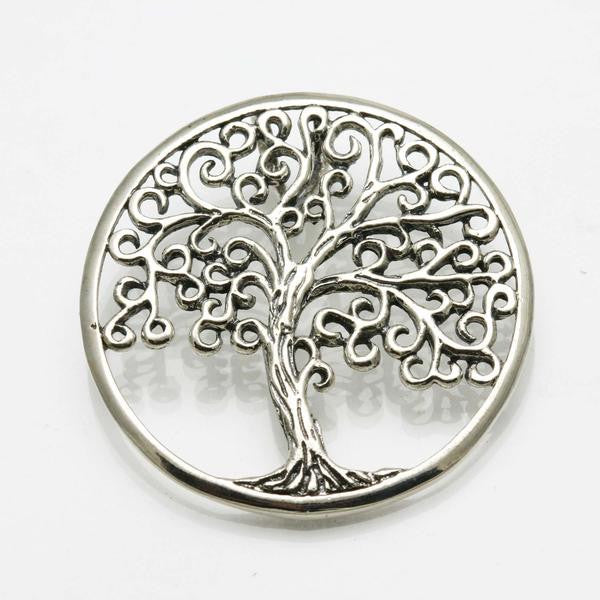
Five More Jewish Symbols You Probably Heard About
There are so many symbols and religious objects in Judaism, it can be hard to keep track. Here are another five you might know something about...
1. Lion of Judah
Each of the twelve tribes of ancient Israel had their own unique symbol. The lion was the symbol of Judah, whose territory included the capital, Jerusalem. From the tribe of Judah came the lineage of King David. After most of the tribes of Israel were lost to the Assyrian conquest, those remaining, mostly comprised of the Kingdom of Judah, began to be known as Jews. Over the millennia, the symbol of the lion, often appearing in pairs, has been used as a design motif on Jewish art and ritual artifacts, including Hanukkah menorahs and Torah cases. It endures today as a Jewish symbol of protection and has more recently been adopted by other cultures, including Rastafarians. The Lion of Judah adorns the crest and flag of the Jerusalem Municipality.
Sterling Silver Lion Ten Commandments Ring
2. Shofar
The shofar is a ritual musical instrument made from a ram’s horn. It is used leading up to and during the Jewish High Holidays during prayer. The shofar, mentioned in the Bible, was used to signal holidays, festivals and even war. Today, the shofar is most commonly associated with Rosh Hashanah, the Jewish new year. Jewish men are obligated to hear the sound of the shofar, live and in person, i.e., a reproduction or recording would not fulfill the religious obligation. The shofar is not blown on Shabbat.
Sterling Silver Shofar Pendant
3. Tree of Life
The concept of a tree of life is one shared by numerous cultures around the world. In Hebrew, it is called Etz Chaim. The tree of life is mentioned in a couple places in the Torah, both in Genesis, in reference to the Garden of Eden, and The Book of Proverbs, which associates it with wisdom and serenity. The symbol of the tree of life is also an allegory for the Torah and the study of Torah.
Sterling Silver Tree of Life Pendant
4. Seder Plate
The Passover seder plate is a symbolic display of foods significant to the retelling of the Passover story at the annual seder meal. This retelling focuses on the Biblical exodus of the Israelites from bondage in ancient Egypt. Some foods used on the seder plate are eaten while others are not. The foods consist of:
Maror and chazeret, bitter herbs such as horseradish or romaine lettuce, symbolizing the bitterness of the Israelite lives under slavery. This is eaten during the seder.
Charoset, a paste typically made from fruits, nuts and wine, charoset symbolizes the brick and mortar made by the Israelite slaves. This is eaten with bitter herbs.
Karpas, a vegetable such as parsley or potatoes, are dipped in salt water and eaten, symbolizing the tears and pain of the Israelites under slavery.
Beitzah, a boiled egg, symbolizes an animal offering to God made during the times of the Jewish Temple. The egg is eaten at the meal, often with saltwater.
Zro’ah, or pascal lamb, is a piece of roasted meat that represents the lamb sacrifice the Israelites made on the eve of the exodus and annually at the Jewish Holy Temple before Passover.
The most iconic seder food, the matzah, is kept on a different plate, either beside or under the seder plate. Three matzot are stacked and covered.
Yellow Gold Seder Plate Pendant
5. Dreidel
The dreidel (Yiddish) or sevivon (Hebrew) is a four-sided spinning top and game associated with the holiday of Hanukkah. Each side of the dreidel has a Hebrew letter on it, forming the acronym for “nes gadol hayah sham,” “a great miracle happened there.” This refers to the miracle of the Hanukkah story of the Jewish victory against the Syrian-Greeks and thereafter rededication of the Jewish Temple and rekindling of the Menorah. In Israel, the acronym was changed to “nes gadol hayah poh,” “a great miracle happened here.”
Interestingly, the dreidel and itself was created a few hundred years ago from a German adaptation of an English gambling game called teetotum. The rules of dreidel are the same, with each letter representing an outcome of the player’s spin. נ – collect nothing, ג – collect everything, ה – Collect half, and ש/פ – put in. To this day, it is a favorite game for Jewish children to play on Hanukkah, usually gambling with chocolate candies.
Sterling Silver Dreidel Pendant




